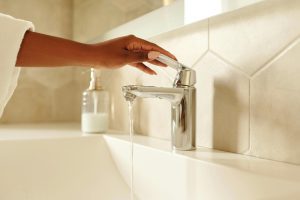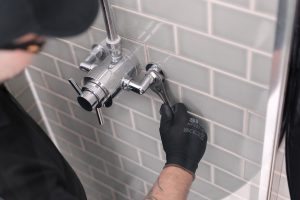If you’ve noticed chalky deposits on your taps or struggled with poor water flow, you may be dealing with hard water. While it isn’t harmful to your health, hard water can cause significant damage to your plumbing and appliances. Here, we explore the causes, consequences, and solutions to protect your home from hard water damage.
What Causes Hard Water?
Hard water occurs when groundwater flows through areas rich in limestone, chalk, or gypsum, picking up minerals like calcium and magnesium. These minerals build up in your water supply, leading to various problems if left untreated.
 Signs of Hard Water Issues
Signs of Hard Water Issues
Wondering if hard water is causing problems in your home? Look out for these common signs:
- Chalky deposits: White or grey residue on taps, showerheads, and sinks.
- Clogged pipes: Reduced water flow or frequent plumbing issues.
- Appliance problems: Shortened lifespans of dishwashers, washing machines, and kettles.
- Spotty dishes and glassware: Residue left after cleaning.
- Dry skin and hair: Hard water can leave soap and shampoo residue, making skin and hair feel dry.
Why Is Hard Water a Problem?
While hard water might seem harmless, its effects can add up over time:
- Limescale Buildup: Mineral deposits form on surfaces and inside pipes, causing blockages and inefficiencies.
- Pipe Damage: Limescale narrows pipes, reducing water flow and increasing the risk of blockages.
- Appliance Wear and Tear: Hard water shortens the lifespan of appliances like kettles, washing machines, and water heaters, leading to costly replacements.
- Higher Energy Bills: Limescale in water heaters reduces efficiency, increasing energy consumption and costs.
How to Test for Hard Water at Home
You can easily check your water hardness:
- Water Hardness Kits: Available online or in hardware stores, these test strips provide quick results.
- The Soap Test: Mix water with soap in a bottle and shake. If you get lots of suds, your water is soft; minimal suds indicate hard water.
Preventing Limescale Buildup
Taking proactive measures can save you time and money in the long run:
- Install a Water Softener: These devices remove calcium and magnesium ions, softening your water and reducing limescale.
- Use Rinse Aids: Additives for dishwashers help prevent mineral deposits on glassware.
- Regular Maintenance: Descale appliances and clean taps and showerheads with vinegar or specialised products.
- Filter Systems: Attach filters to taps or use a whole-house filtration system to reduce minerals.
How to Remove Limescale
If limescale has already built up, don’t worry; you can tackle it effectively:
- Vinegar and Baking Soda: Soak affected areas in a vinegar solution or use a paste of baking soda to scrub surfaces.
- Descaling Products: Available for kettles, coffee machines, and other appliances.
 Fixing Hard Water Damage
Fixing Hard Water Damage
If hard water has caused significant damage, here’s what you can do:
- Appliance Servicing: Regular servicing can extend the life of appliances affected by hard water.
- System Upgrades: Invest in modern water softening and filtration systems to prevent future damage and improve efficiency.
The Importance of Removing Limescale
Limescale isn’t just unsightly; it’s detrimental to your home’s efficiency and longevity. Removing limescale and adopting preventive measures can:
- Improve water flow and reduce blockages.
- Extend the lifespan of plumbing and appliances.
- Lower energy bills by improving water heater efficiency.
How We Can Help
Hard water doesn’t have to be a headache. With the right tools, techniques, and maintenance, you can minimise its impact and keep your home running smoothly.
If you’re experiencing hard water problems, Metro Plumb can assist. With depots across the UK, our experienced plumbers are available 24/7. Contact the team today on 0808 250 9949 or make an enquiry here.
 Signs of Hard Water Issues
Signs of Hard Water Issues  Fixing Hard Water Damage
Fixing Hard Water Damage